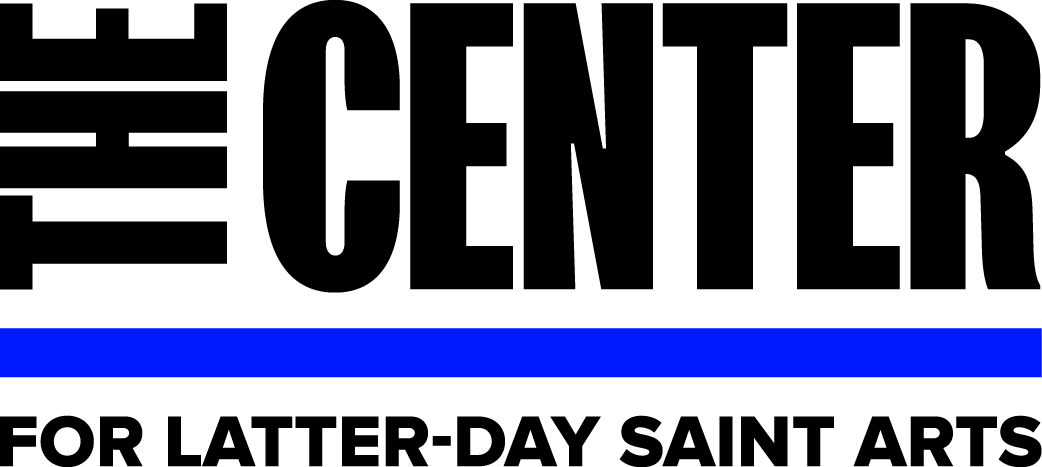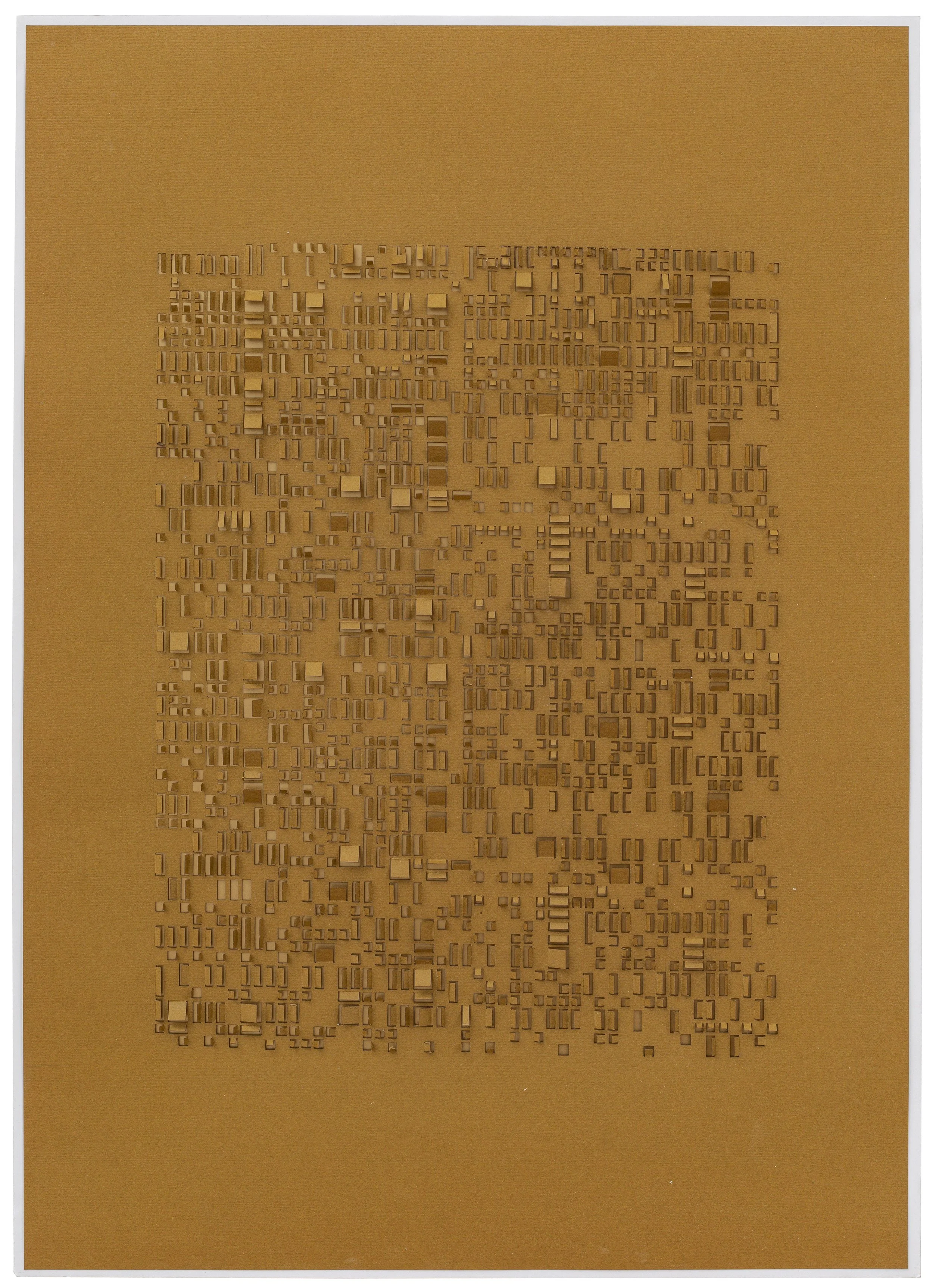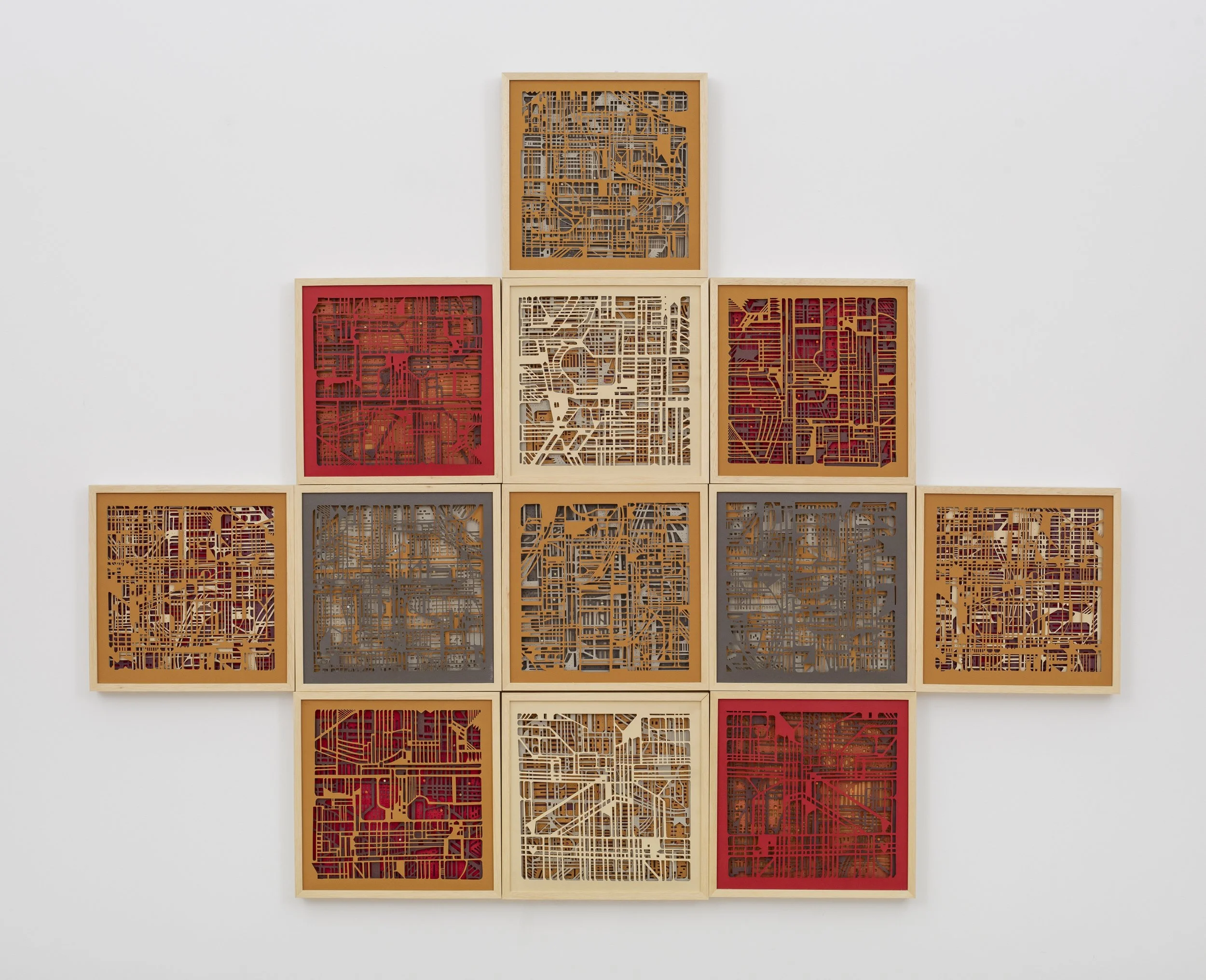(Instruments of Silence)
Gonzalo Silva & Susana Silva
Ariel Bybee Endowment Prize Winners ‘23
New York NY | Berkeley CA

Plan Your Visit
With exhibitions planned from coast to coast, this unique body of work is covering ground. Find exhibition information for New York and Berkeley below.

On display now:Berkeley, CA
October 10-December 11, 2025
Graduate Theological Union Library (2400 Ridge Rd, Berkeley, CA)Instrumentos de silencio will arrive to the west coast at the Graduate Theological Union, the most comprehensive center for the graduate study of religion in North America. Join the Center at GTU on Oct. 10th for Critical Tensions: Latter-day Saint Art, Devotion, and Design, and an opening reception for exhibition afterwards.
PREVIOUSLY UNVEILED ATNew York City
August 5-22, 2025
Sargent’s Daughters Gallery (370 Broadway, New York, NY)Right in the middle of NYC’s rapidly-growing Tribeca arts district is Sargent’s Daughters Gallery, a boundary-pushing contemporary gallery. Artists Gonzalo and Susana unveiled their new body of work on August 5th.
Explore the Art
The series of 3-D printed bas reliefs, Territorio sonoro, explores the use of music as a technology for dominance. It connects the architectural designs of the “Musical Angels” friezes in the Trinidad Reduction with inset maps, engraved on computer circuit boards, that depict Spanish Jesuit settlements that took place over Guaraní territories (present-day Paraguay and Argentina). | Gonzalo Silva, Territorio sonoro (2025). 3D print, laser engraved FR-4 circuit board. 9½ x 13¾ inches.
The series of cut paper works, Códigos de vacío, is a highly-detailed series of marks that evoke computer punch cards, musical notation, and digital language in an abstract way. Instead of the binary of computers—on or off—these individual markings are not only open or closed, but partly open as well, which gives the surface of the paper a visual and tactile rhythmic cadence. The work in white paper is entirely hand-cut, the golden papered and red papered works are cut with a CNC laser cutter. | Susana Silva, Códigos de vacío, 2025. CNC and hand-cut paper, 28⅜ x 43¼ x 2¾ inches.
Gonzalo Silva, Territorio sonoro (2025). 3D print, laser engraved FR-4 circuit board, 9½ x 13¾ inches.
This work stems from the exploration of multiple systems of visual encoding, playing with the relationship between the punched cards used in early computers and graphic scores. The perforated patterns are traces of a language in transit—signs that could be read as bits, as notes, or as silences. The artist translates this logic of coding onto a new surface: cut and folded paper that breaks away from two-dimensionality and extends into space. | Susana Silva, Partitura modular, 2025. Folded hand-cut paper, 33⅞ x 17¾ x 2⅛ inches.
The title of this photograph comes from the folk ballad, “Oh My Darling Clementine,” which this Ferranti Mercury computer, the first scientific computer in Argentina (named Clementina), was programmed to play when booted up. Laser cut over the vintage image are the words “To peak and pine” in punch code letters and spaces, a verse of the song that was removed in popular variations. The computer was later programmed to play tango songs and was abandoned and dismantled during the ‘70s. | Gonzalo Silva, To peak and pine, 2025. Laser cut on giclée print, 13¼ x 15¾ inches.
In the photographic series, "Liturgia eléctrica," the artist explores the interior of a pipe organ in a 19th century Anglican church in Buenos Aires. The pipes, circuitry, bellows, and thermometer belie an extended history of constant use—an old instrument, made in the U.S. and transported to Argentina. Over time, the devotional object includes the handiwork of the skilled and unskilled technicians who have tried to keep it functioning, often jerry-rigged with simple wire or graffitied with pop culture imagery. | Gonzalo Silva, Liturgia eléctrica, 2025. Photograph, giclée print, 47¼ x 31½ inches.
Wandering Breath contains computer CD drives outfitted with images and objects that span centuries. It reflects upon different systems of storage and reproduction of memory and Western attempts to understand these other technologies. The object includes a black and white photograph of an architectural dig of human remains from the Mexica culture. Among the bones was discovered an object, here copied and 3-D printed in resin, that is a playable death whistle, whose ceremonial and musical purpose is still debated. Alongside scientific imagery there is a medieval miniature rendering of two musicians playing wind instruments. | Gonzalo Silva, Wandering Breath, 2025. CD drive, giclée print, resin 3D print, 11¾ x 5¾ x 1¾ inches.
The object includes printed and etched plexiglas panels that reproduce colonial and modern representations of quipus, an ancient Andean recording device composed of knotted ropes that probably were used to convey both mathematical and narrative information. | Gonzalo silva, Wandering Thread, 2025. CD drive, etched plexiglass, 7⅞ x 5¾ x 1¾ inches.
In Incan culture, tocapus were panels made prior to the arrival of the Spanish in Peru. Employing the graphic systems of the Quechua and Aymara languages, these panels appeared on textiles and objects of all kinds. With the arrival of the Europeans, much of this mastery disappeared as a communication system. The artist’s twelve panels of cut paper form layers of elaborate interplaying graphic improvisations. Tocapus, once found in ceremonial textiles and objects, functioned as encrypted visual languages. In this work, their communicative essence is reimagined through the creation of a contemporary graphic score. Rather than replicating traditional Incan symbols, the piece explores the connections between music and visual language, developing a rhythmic structure that operates as an abstract notation. Through layered graphic improvisations, the composition evokes the sensation of a woven textile. | Susana Silva, Tocapu, 2025. CNC and hand-cut paper, 61 x 61 inches.
Gonzalo Silva Gonzalo silva, Liturgia eléctrica, 2025. Photograph, giclée print, 26 x 39⅜ inches.
In 1631, "Hanacpachap Cussicunin" became the first Christian hymnal printed with musical notation in the Quechua language and the first musical score published in the New World. This 21st-century artist’s book engages critically with that historical precedent and is presented in two parts. The box, laser-cut on Fabriano paper, quotes fragments of the original liturgical text, revealing its dual nature: a tool of evangelization and an instrument of cultural subjugation. The folded signatures evoke the format of the colonial book but also question it. Through an architectural plan of the cathedral where the music was first performed, pages with its musical notation, and a detail from the original frontispiece, the work unfolds a reading that denounces the Western structure of the book as a device of symbolic containment. Here, the book not only transmits but also confines: It is a symbol of institution and power. Silence—understood as form—emerges as a central element. The absences, the blank spaces in the notation, the graphic pauses, are not mere voids but metaphors for what was silenced: the voices and worldviews suppressed under the guise of harmony. | Susana Silva, Ritual, formulario e institución, 2025. CNC and hand-cut paper, 11¾ x 16½ x 1⅝ inches.
Gonzalo Silva, Liturgia eléctrica, 2025. Photograph, giclée print, 47¼ x 31½ inches.
Gonzalo Silva, Liturgia eléctrica, 2025. Photograph, giclée print, 26 x 39⅜ inches.
Gonzalo Silva, Wandering Thread, 2025. CD drive, etched plexiglass, 7⅞ x 5¾ x 1¾ inches.
Susana Silva, Códigos de vacío, 2025. CNC and hand-cut paper, 28⅜ x 43¼ x 2¾ inches.
Susana Silva, Códigos de vacío, 2025. CNC and hand-cut paper, 28⅜ x 43¼ x 2¾ inches.
About The Exhibition
Scars / Scores
Instrumentos de silencio explores the tensions and resonances between hearing devices, inscription techniques, and processes of cultural syncretism in the encounters between the Americas and Europe. Through a constellation of works —combining paper cut-outs, 3D printing, UV printing on steel, and digital collage— it examines the ways in which music, as a technology of memory and writing, articulates genealogies of conquest, resistance, and cohabitation.
Memory is externalized through technical objects, and it is through them that we construct the narratives that give meaning to our past, shape our reality, and allow us to imagine possible futures. Codex notations, magnetic tapes, zoomorphic whistles, mechanical instruments, and early computers all act as vessels where musical practices are transformed into knowledge.
Coexistence / Contradiactions
Colonization, among other catastrophes, brought the disruption of technical traditions, leading to the atrophy of memory and the loss of the capacity to represent the future.
The exhibition, however, approaches the interweaving of cultural matrices not as fusion or hybridity, but as the coexistence of contradictions. It is not about denying the parts or seeking a synthesis, but about acknowledging the ongoing struggle within our subjectivity: between the indigenous and the European, between innovation and tradition, between the individual and the collective.
Restore / Activate
Pre-Columbian musical artifacts engage in dialogue with medieval European manuals, and between its perforations, imaginary scores reveal layers of exchange, violence, and appropriation that do not dissolve into synthesis but persist as active frictions. Instrumentos de silencio presents itself as an essay on plurality, on disarticulating inherited logics, and on creatively embracing the coexistence of elements in tension. It proposes a speculative archaeology of musical memory: an exploration through silences, fragments, and hybrid objects that do not seek to restore an origin, but to activate a critical listening to the traces technologies have inscribed upon bodies, territories, and cultures.
Score of Hanacpachap cussicuinin, first christian hymn in Quechua language (Juan Pérez de Bocanegra, 1631, Kingdom of Perú)
About the Artists
Ariel Bybee Endowment Winners 2023
Sister-and-brother artists from Buenos Aires, Susana and Gonzalo Silva, were selected as the 2023 Prize winners of the Ariel Bybee Endowment at the Center, an annual award that rotates between 9 artistic categories.
The 2023 prize theme was visual artwork, inspired by a specific piece of music of the artist’s choosing. Their winning proposal referenced a fellow Argentinean and female pioneer of electroacoustic music in Latin America, Hilda Dianda (b. 1925). Dianda’s Dos Estudios en Oposición (“Two Studies in Opposition,” 1959) was intended for magnetic tape. Likewise, the Silvas’ proposal was conceived as a mixed-media installation exploring two distinct research frameworks: the dialogue between graphical music notation and its relationship with contemporary visual art; and a review of Latin American, female representation within the canon of contemporary musical history.
Ariel Bybee & The Endowment at the Center
Learn more about Ariel Bybee’s legacy and the multi-disciplinary endowment.
Acknowledgements
Ariel Bybee Endowment Committee
Neylan McBaine
Patrick Perkins
Jamie Peterson
Donors to the Ariel Bybee Endowment
Allegra LaViola, owner, Sargent's Daughters Gallery
For the Center for Latter-day Saint Arts
Glen Nelson, Director of Special Projects
Mykal Urbina, Executive Director
Veronica Harvey, Director of Marketing and Communications
2023 Ariel Bybee Endowment Jury
Georgina Bringas, artist
Kent Christensen, artist
Janalee Emmer, director, Brigham Young University Museum of Art
Campbell Gray, retired director, The University of Queensland Art Museum
Allegra LaViola, owner and director, Sargent’s Daughters
Neylan McBaine, CEO, Duet Partner
Kah Poon, photographer
Warren Winegar, art advisor, Winegar Fine Art




























